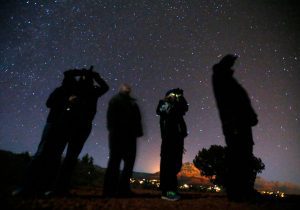Greenland glaciers may lose more ice than previously thought, raising concerns about sea level rise

But what experts have less information about is how these vital glaciers have changed in the past, especially in the centuries before satellite records existed. Understanding how glaciers respond to past changes in climate could influence scientists’ expectations of how they will respond to global warming in the future.
Researchers have found that Greenland’s glaciers are extremely sensitive to climatic conditions, and they lost ice in the late 19th and early 20th centuries at rates that rival or exceed those we see today. With the planet – and the Arctic in particular – expected to warm a lot this century, scientists have warned that their results show that Greenland’s ice loss could exceed even the worst forecasts.
David Holland, a professor of mathematics and environmental sciences at New York University and co-author of the study, said the team’s findings show that the Arctic is “undergoing a double whammy with respect to the loss of its land and sea ice. It is covered in a warming world.”
Using historical images of the Jakobshavn, Helheim, and Kangerlussuaq glaciers, the team calculated the ice loss from 1880 to 2012. They estimated that the amount of ice lost from these three glaciers alone resulted in an 8.1 mm sea level rise. Holland said that while the three glaciers are important in their own right, they also act as a surrogate for the majority of Greenland’s other glaciers, giving scientists a glimpse into how the entire ice sheet is behaving.
The Greenland Ice Sheet is a dynamic, ever-changing place. Moon says that if we think of the interior of the ice sheet as a mountain lake, then those glaciers are the currents flowing from the lake, carrying the ice away from it and in many cases, to the ocean. When the ice separates from the glacier and descends into the ocean, it raises sea levels.
“These three glaciers are among the fastest-moving in Greenland. When we think of these glaciers around the edge of Greenland that run like conveyor belts (the ice moves toward the ocean), these are some of the fastest and largest conveyor belts on the ice cap,” said Toila Moon, Deputy Lead scientist at the National Snow and Ice Data Center in Boulder, Colorado, who was not involved in the study.
Glaciers also contain enough ice to raise global sea levels by about 1.3 meters.
Holland says the loss of ice over time is caused by the natural shifts in winds and ocean currents, and as warm water approaches glaciers, it melts. But human-induced warming has altered the climate and altered how winds and oceans interact with the ice sheet, thus affecting the amount of ice loss.
The team found that ice loss rates at the Jakobshafen Glacier in the early 20th century were comparable to the massive losses seen today, and for the Kangerlussuaq Glacier, the ice loss between 1880 and 1930 was in fact greater than today.
This is important because it shows that glaciers were losing large amounts of ice at a time when global temperatures were lower than they are now.
Under the worst-case scenario where humans continue to raise concentrations of these greenhouse gases in the atmosphere, the planet’s temperature could rise by 3.7 ° C (6.66 ° F) by the end of this century.
If glaciers had already suffered significant ice losses when atmospheric and ocean temperatures were lower – and the planet was set to warm more in a high-emissions future – scientists say their findings may mean the models used to predict future ice loss in an underestimated manner. Greenland how much it stands to lose by the turn of the century.
This could also affect current projections of sea level rise.
“I think when it comes to the pace of change in Greenland and with ice everywhere in the world, we are really in the state of the Five Alert,” Moon said. “And this paper is another paper in that brutal pile that says these are really dangerous changes, they happen very quickly and we need to take action as soon as possible so that we can try to reduce the rate of change in the future.”
In the study, the scientists said that the potential reduction in ice loss likely “is not limited to these three glaciers only,” and that it is important for models to capture the rapid retreat of ice due to the warming of the oceans and atmosphere caused by humans. “Because it is the primary driver of mass loss.”
The team hopes that their findings on how glaciers are sensitive to changes in climate will help make future predictions of ice loss more reliable.
“The Arctic is losing ice, and as you look in more detail over the past century, you see periods of more loss and fewer losses, but the loss is always,” Holland said. “With increased warming expected to continue into the future, increased ice loss can be expected with potentially serious negative consequences for coastal cities around the world.”
Ivana Kotasova of CNN contributed to this report.

Communicator. Reader. Hipster-friendly introvert. General zombie specialist. Tv trailblazer





